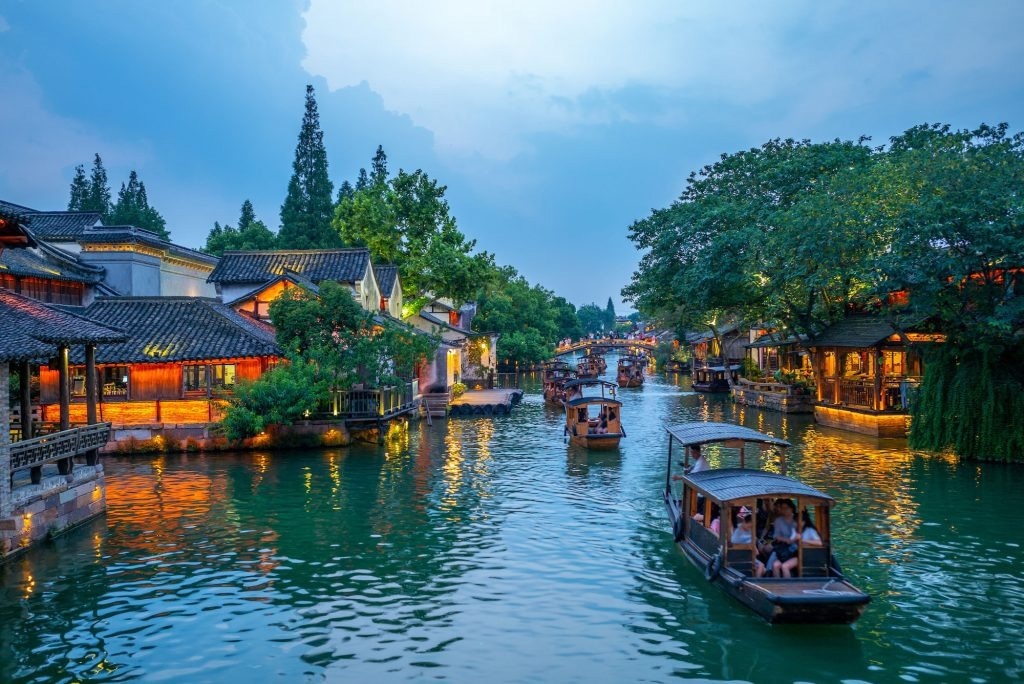Water, being a fundamental natural asset, holds utmost importance in fostering the development of any locality. The availability and equitable distribution of water within a city play a pivotal role in promoting sustainable growth.

Waterways of Suzhou. Image Credit: Xi’an Jiaotong-Liverpool University
Hence, evaluating a city's adeptness in managing its water reservoirs becomes imperative for fostering an economically progressive environment in an eco-conscious manner.
Suzhou, situated in eastern China, boasts ample water resources and intricate water networks, with nearly half of its area submerged in water. As a significant industrial hub within the Yangtze River Delta area, Suzhou has experienced swift urban expansion.
This rapid growth presents a challenge for authorities, who must navigate the management of water resources amidst escalating water demands, all while combatting sewage issues and controlling pollution.
Scientists from Xi’an Jiaotong-Liverpool University, China, designed a system to estimate the water quality experiments in Suzhou and compute an overall score of the city’s water ecological carrying capacity in a recent paper published in the Journal of Water Resources Management. The score analyzes the region's capacity to retain water quality standards while experiencing maintainable social development.
The team analyzed that the city’s water capacity has been raised since 2001 by examining several factors, such as the condition of Suzhou’s water sources, the impact of human activities, and the city’s socioeconomic factors.
The steps taken by the government, like industrial structure optimization and wastewater recycling, are effective from the increase in water capacity. However, there are still some features that can further progress the water environment.
In conclusion, the research can assist city planners in making informed decisions for the upcoming growth of sustainable cities globally.
Managing Urban Water Demands
We analyzed data from 2001 to 2021 and found that Suzhou’s water capacity has increased over time, suggesting better water management and more effective water usage. During the two-decade period we studied, the industrial structure of Suzhou has been continuously optimized, and more and more attention is being paid to collecting and treating wastewater. This has contributed to a better water environment.
Jiaxi Chen, Study First Author and Masters Graduate, Department of Civil Engineering, Xi’an Jiaotong-Liverpool University
He was supervised by Dr. Xiaonan Tang.
Chen says, “There are still factors straining the water capacity. Although the overall water capacity has increased, the total water resources available in Suzhou have fluctuated over the years but slightly decreased in general. Lack of usable water resources can lead to unbalanced water distribution and worse water quality. Also, with rapid urbanization, more and more people live in urban areas. The increasing water consumption in the city has added pressure to Suzhou’s drainage system.”
Measures for Improvement
The scientists have made various references to further develop water and environmental management in cities.
First of all, the ecosystem should always be protected as it will directly impact water resources. The government should regulate sewage discharge and prohibit the setting up of polluting enterprises near lakes and wetlands to prevent water pollution at the source. Better control and maintenance of important rivers and lakes can also improve the water environment.
Jiaxi Chen, Study First Author and Masters Graduate, Department of Civil Engineering, Xi’an Jiaotong-Liverpool University
Chen concludes, “Efforts should be made to increase public awareness of water conservation. The general public needs to be encouraged to adopt more efficient water-use practices. On the macro level, cities should modify their industrial structure towards one that is compatible with the water capacity. By promoting cleaner production in industry and agriculture, water consumption and pollutant production can be reduced, and water recycling and reuse rates can be enhanced.”
Journal Reference
Jiaxi Chen and Xiaonan Tang (2023). Towards Sustainable Cities: Studying Evaluation Index of Water Environment Carrying Capacity. Springer Link. doi/10.1007/s11269-023-03635-5